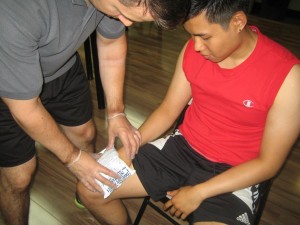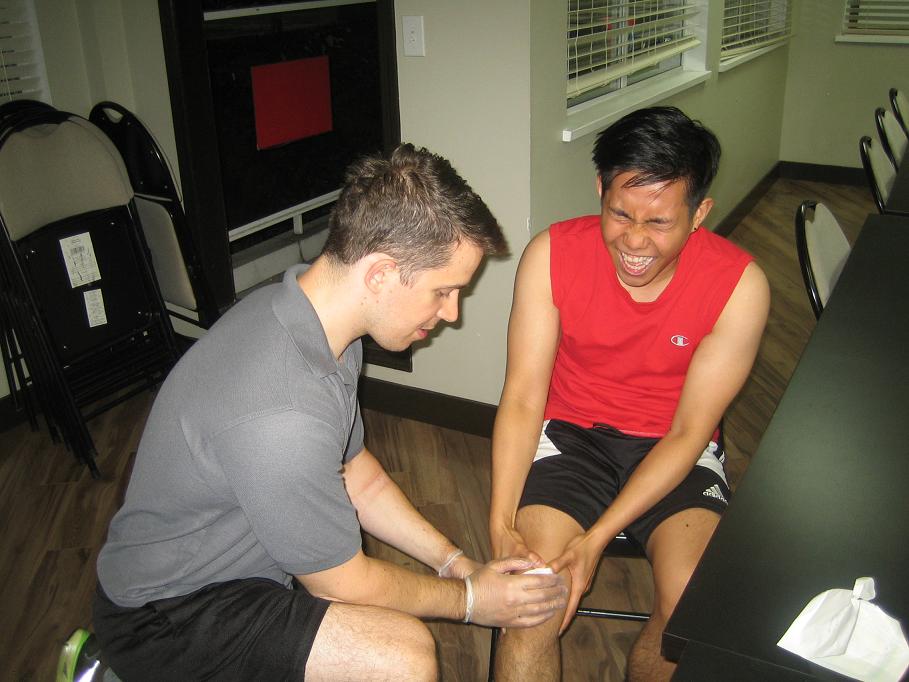Road rash is a skin injury caused by abrasion with road surfaces usually while cycling, longboarding and motorcycling.
Symptoms of road rash
- Heavy bleeding
- Pain
Treatment

- If the accident occurred in a dangerous area such as in the middle of the road, move to a safe area away from the road if capable of moving to prevent further injury to the affected area.
- Stabilize the injuries. If a concussion is suspected, seek medical help immediately. Apply pressure on the wound using the hands or clothing to lessen the bleeding.
- Wash hands properly before touching the wound to prevent infection. Wash hands thoroughly using warm water and soap and put on disposable gloves before cleaning the rash.
- Stop any bleeding by applying pressure on the affected area. Place a clean cloth over the wound and place pressure. If the cloth becomes soaked with blood, place another cloth over the soaked cloth. If bleeding does not stop after 10 minutes, seek medical help.
- Rinse the wound using cool water. Make sure it flows over wound to wash off any loose dirt and debris. Use antibacterial soap to clean the areas around the wound. Make sure to avoid getting the soap in the wound to prevent irritation.
- Remove any debris such as sand, dirt or splinters using sterilized tweezers to remove the debris.
- Dirt or debris that are lodged deeply into the wound must be cared for by a doctor.
Additional measures
- Apply the prescribed antibiotic cream if the wound is dirty to lessen the risk for infection and promote fast healing of the condition. Another alternative is to apply petroleum jelly.
- Elevate the wound above the level of the heart to lessen the swelling and pain on the first 24-48 hours after the accident especially if the affected area is severely wounded or infected.
- Cover the wound using a bandage to protect it from irritation, infection and dirt from clothing during the healing period. Use non-stick bandage or sterile gauze and secure in place with a tape or elastic band.
- Change bandages every day. Wash away dirt from the area using antibacterial soap and water before covering with a bandage.
- Take the prescribed over-the-counter pain medication such as ibuprofen or acetaminophen to lessen the pain and swelling.
- Drink plenty of water at least 6-8 glasses of water everyday along with healthy foods to promote fast healing of the condition.
Disclaimer / More Information
The material posted on this page on road rash is for learning purposes only. Learn to provide proper wound care for a road rash by taking a first aid and CPR class with one of our training providers.
FACT CHECK
https://en.wikipedia.org/wiki/Abrasion_(medical)

